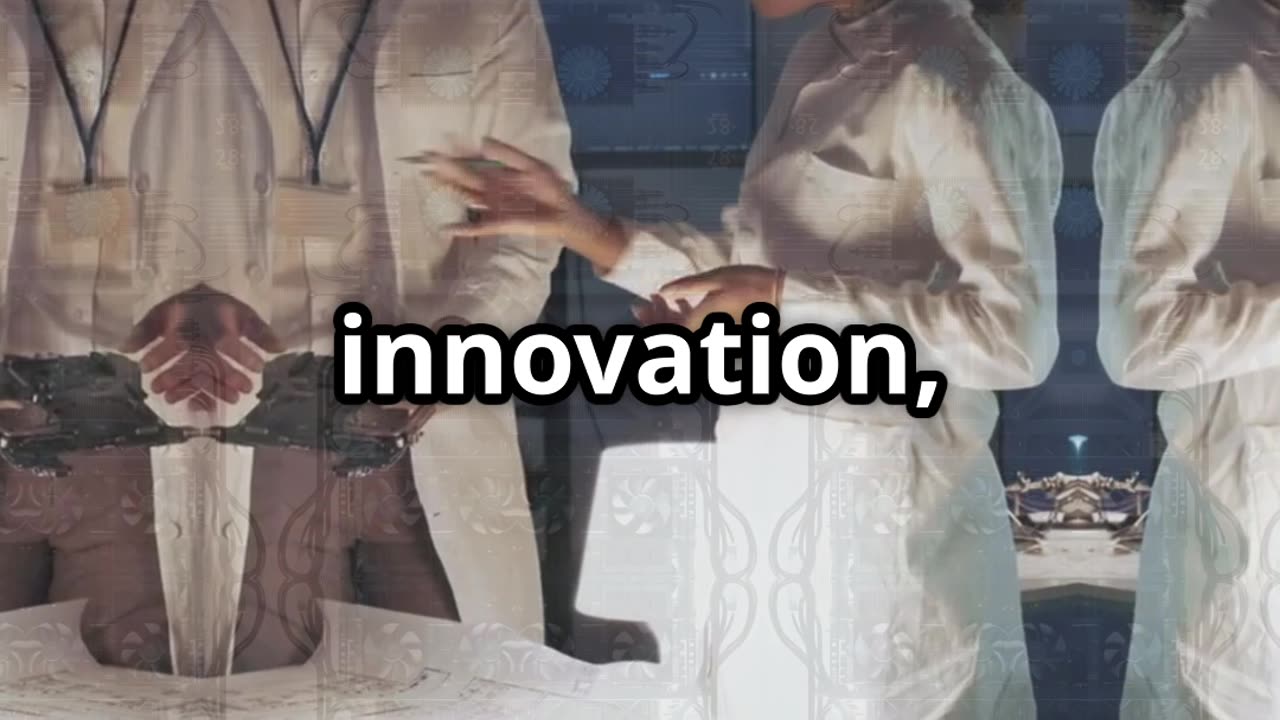Premium Only Content

Why Chicago Pixels Matters!!! An Imaginative And Creative license!
The history of technological innovation is punctuated by a few revolutionary institutions that operated outside the traditional market-driven paradigm. Organizations like Bell Labs and Xerox PARC are revered not for their immediate profitability but for their foundational, "blue-sky" research that laid the groundwork for entire industries. As a new entity like Chicago Pixels emerges with a similar mission of experimental, cutting-edge research, adopting a non-profit, grant-funded model is a strategic imperative. This structure offers the crucial insulation from commercial pressures necessary for nurturing true innovation, mirroring the conditions that allowed its esteemed predecessors to flourish.
Lessons from Bell Labs and Xerox PARC
Early-stage experimental research is inherently at odds with the demands of a for-profit business. The timelines are long, the outcomes are uncertain, and a significant portion of the work may never lead to a marketable product. Unlike a startup focused on a single, monetizable idea, institutions like Bell Labs and Xerox PARC were designed to explore a broad range of speculative concepts.
Bell Labs, operating under the protective umbrella of AT&T's regulated monopoly, was free to pursue a diverse portfolio of research without the pressure of a quarterly earnings report [1]. This environment led to the invention of the transistor (which earned a Nobel Prize), the laser, and the charge-coupled device (CCD)—none of which were immediately commercially viable, but all of which fundamentally changed the world [2]. Similarly, Xerox PARC, funded by the profits of Xerox’s dominant copier business, incubated technologies like the graphical user interface (GUI), the computer mouse, and Ethernet [3, 4]. These innovations were so far ahead of their time that Xerox itself failed to capitalize on them, but their creation was only possible because researchers were not tethered to a clear profit motive [3].
The Imperative of a Non-Profit Model for Chicago Pixels
For Chicago Pixels, the non-profit model provides a similar sanctuary. Rather than seeking venture capital that demands a quick return on investment, the organization could rely on grants from philanthropic foundations, government agencies, and educational institutions. This funding structure would allow researchers to pursue projects without a predetermined commercial endpoint. They could dedicate time to understanding fundamental principles of computer graphics, interactive media, or artificial intelligence without the need to justify every expense with a potential product roadmap. The focus would shift from "what can we sell?" to "what can we discover?" This freedom from market constraints is not a luxury; it is a necessity for the kind of ambitious, paradigm-shifting work that Chicago Pixels seeks to undertake.
A Case Study: The Super Integrated Circuit Chip
The experimental nature of Chicago Pixels' flagship product, "THE SUPER INTEGRATED CIRCUIT CHIP SEMICONDUCTOR DEVICE," serves as a prime example of why this model is essential. The development of such a highly integrated and novel semiconductor device—as described in US patent number 8987873—is a long-term, high-risk endeavor [5]. It requires significant investment in basic materials science, quantum computing principles, and complex fabrication techniques. The commercial viability and market adoption of such a foundational technology would be years, if not decades, away. A for-profit company would likely abandon such a project in favor of a more marketable product with a shorter development cycle. However, a non-profit entity, supported by grants, could provide the sustained commitment and resources needed to see such a monumental project through to its completion, regardless of short-term profitability.
Fostering an Open and Collaborative Culture
A non-profit structure also facilitates a more open and collaborative research culture. Unlike a for-profit company that must guard its intellectual property as a competitive advantage, a non-profit entity is often incentivized to publish its findings and contribute to the broader academic community. This open exchange of ideas accelerates progress and builds a reputation that attracts top-tier talent. This kind of ecosystem, where the primary goal is the advancement of knowledge rather than the accumulation of capital, is exactly what enabled Bell Labs and Xerox PARC to become magnets for some of the greatest minds of their generations [1, 3].
Conclusion
The path to sustained, impactful innovation is rarely linear or directly profitable. The histories of Bell Labs and Xerox PARC demonstrate that the most significant technological leaps often occur in environments insulated from the immediate pressures of the marketplace. For a new organization like Chicago Pixels, aspiring to a similar legacy of groundbreaking research, a non-profit, grant-funded model is not merely an alternative—it is the most logical and effective strategy. By prioritizing discovery over profit, Chicago Pixels could create a space where creative freedom and intellectual curiosity are paramount, positioning itself to produce the next generation of technologies that will shape our collective future.
References
1. Jon Gertner, The Idea Factory: Bell Labs and the Great Age of American Innovation. Penguin Press, 2012.
2. Bell Labs, "Bell Labs Nobel Laureates," Bell Labs, accessed August 6, 2025.
3. Michael A. Hiltzik, Dealers of Lightning: Xerox PARC and the Dawn of the Computer Age. HarperBusiness, 1999.
4. Computer History Museum, "Xerox Alto," Computer History Museum, accessed August 6, 2025.
5. United States Patent and Trademark Office, "U.S. Patent No. 8,987,873," USPTO, issued March 24, 2015.
-
 3:02:27
3:02:27
TimcastIRL
4 hours agoEpstein Transparency PASSED UNANIMOUSLY, Trump To SIGN Release | Timcast IRL
208K104 -
 LIVE
LIVE
SpartakusLIVE
6 hours agoARC is SO ADDICTING - I just CAN'T stop || NEW SCHEDULE, NEED SLEEP
842 watching -
 LIVE
LIVE
Drew Hernandez
21 hours agoEPSTEIN TRANSPARENCY ACT PASSES: POLITICAL THEATER OR FULL DISCLOSURE?
1,036 watching -
 LIVE
LIVE
StevieTLIVE
4 hours ago#1 SOLO Warzone POV 6.9 KD
93 watching -
 2:57:53
2:57:53
Barry Cunningham
8 hours agoBREAKING NEWS: PRESIDENT TRUMP HOSTS DINNER WITH SAUDI ARABIA CROWN PRINCE MOHAMMED BIN SOLMAN !
61.8K26 -
 LIVE
LIVE
Spartan
3 hours agoPro Halo Player, insta locking Neon, plays Valorant for the first time since Beta. Rusty af on MnK
329 watching -
 30:14
30:14
Robbi On The Record
11 days ago $8.50 earnedYou’re Out of Alignment: Spiritually, Mentally, Physically. Here’s Why. ft Dr. Rich
59K4 -
 57:56
57:56
Sarah Westall
3 hours agoFormer DIA Chief of Global Operations: CIA and FBI - Broad Institutional Crisis w/ Jeffrey Prather
22.7K -
 1:49:25
1:49:25
Joker Effect
3 hours agoGIRTHY GORILLA AND SOUNDBOARDLORD Chime in as to WHY THEY DID IT! What do they need!
14.3K2 -
 2:07:43
2:07:43
Blabs Life
13 hours agoLow IQ Apex Legends | Noob Plays
31.1K1